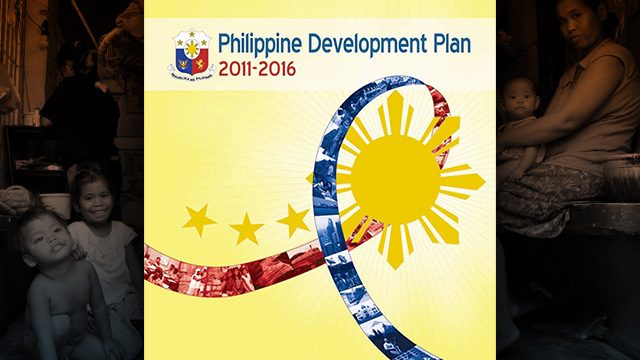SUMMARY
This is AI generated summarization, which may have errors. For context, always refer to the full article.

MANILA, Philippines (UPDATED) – The government on Monday, April 14, announced plans to spend more on infrastructure and introduce other reforms to try to lift millions out of poverty.
The revised Philippine Development Plan sets more ambitious economic targets to address persistent concerns that poor Filipinos are not enjoying the benefits of the country’s recent dramatic economic growth.
Among the new targets is the lowering of the poverty incidence from 25.2% of the population in 2012 to 18 to 20% by 2016, economic officials said.
The government in 2011 had earlier targeted poverty incidence to fall to 16.6% by 2016 but economic planners said this was no longer realistic.
“It does not mean that we can do nothing but wait until the benefits of economic expansion ‘trickle down’ to the poor,” Socio-economic Planning Secretary Arsenio Balisacan said in an introduction to the revised plan.
Despite economic growth of more than 7% in recent years – among the highest rates in Asia – unemployment has remained high while the rate of poverty has barely fallen. (READ: PH good on economy, lags on poverty, jobs)
“Simply stated, the gains have yet to materialize into actual, tangible improvements in the lives of the majority of the people,” the report said.
Under the revised plan, the economy is expected to grow by 7.5 to 8.5 percent annually by 2016 compared to the original target of 7.6% set in 2010 when President Benigno Aquino took office.
Chief among the poverty-fighting measures is an increase in infrastructure spending to 5% of gross domestic product by 2016, compared to the 2013 level of less than 3 percent.
This will include reconstruction efforts after Super Typhoon Haiyan and a killer earthquake left thousands dead and devastated large areas in the central Philippines last year, said Emmanuel Esguerra, deputy director of the National Economic Development Authority (NEDA). (READ: NEDA: More poor Filipinos due to calamities)
These reforms in turn will improve the connections between urban centers where growth has been concentrated and the poverty-stricken rural areas where the majority of the country’s 100 million people live, the plan said. (MAP: The poorest provinces in PH)
The country’s crumbling infrastructure has long been cited by businessmen and economists as one of the biggest obstacles to prosperity, raising transport and power costs, keeping regions mired in underdevelopment and discouraging investors.
Critics charge that only a few sectors are enjoying the benefits of the country’s economic growth while many Filipinos have not been touched by it.
Balisacan last month had expressed doubt about the feasibility of reducing the incidence of poverty to 16.6% by 2016.
He said at the time the poverty rate was now forecast to be 18-20% by 2016, partly due to last year’s natural disasters. – Rappler.com
Add a comment
How does this make you feel?
There are no comments yet. Add your comment to start the conversation.